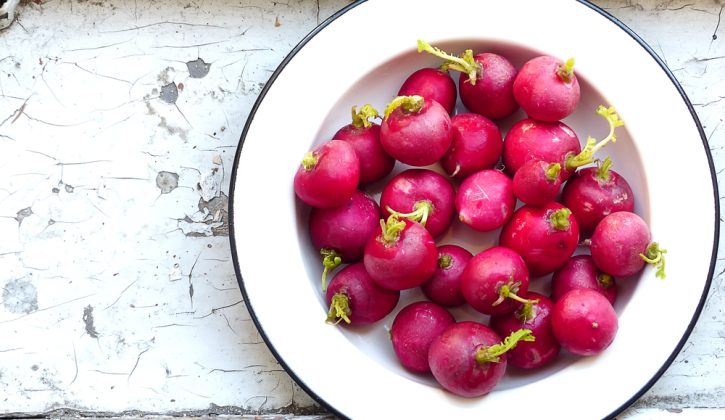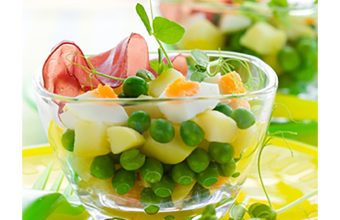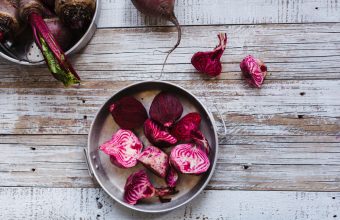Spring. What an awesome season. Winter is (finally) subsiding, the days are getting warmer, the light stays around for longer, the birds are chirping, and the trees are starting to bloom. Spring is also the time when we say see-ya-later to heavy winter vegetables (we’re looking at you potatoes, squash, and beets) and say hello to the fresh and spring veggies that the season is all about. For a little inspiration, we’re sharing our favourite six spring veggies to get excited about. They don’t last long so start shopping!
6 Spring Veggies to Get Excited About
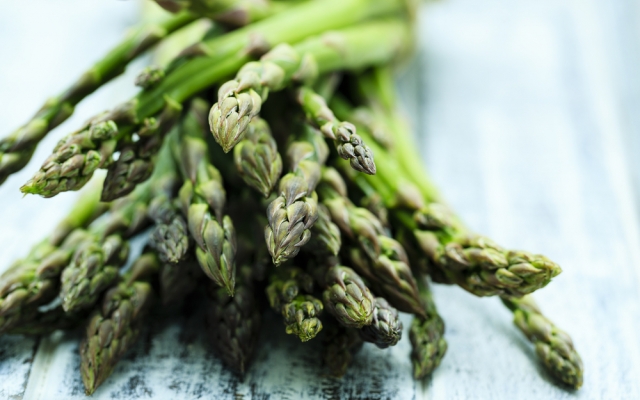
1. Asparagus
Asparagus is an excellent source of folacin, glutathione, and protein as well as thiamin and Vitamin B6. It also packed with rutin which is excellent for strengthening capillary walls. Asparagus actually trims itself in that when you snap it, it will break exactly where it should be trimmed – a little trick of nature. Asparagus should be stored standing up in water to maintain its freshness so avoid buying if it is just in bunches or the tray is dry. Look for stalks about six to ten inches in length that are a nice crisp, green. Stalks should be firm and the tips should be closed tightly. Avoid really thick stalks or stalks that are white at the ends as these tend to be very woody and much of the stems will go to waste. Asparagus is more versatile than most spring veggies as it can be served in many ways from soups to salads and as the perfect accompaniment for fish, poultry, and meats. It can also be prepared quickly and easily from a quick zap in the microwave to grilling. It also has a bright, distinct flavour with slightly bitter, yet pleasing undertones.
If your kids are reluctant, mention the pee smell thing. That alone might convince them to try it.
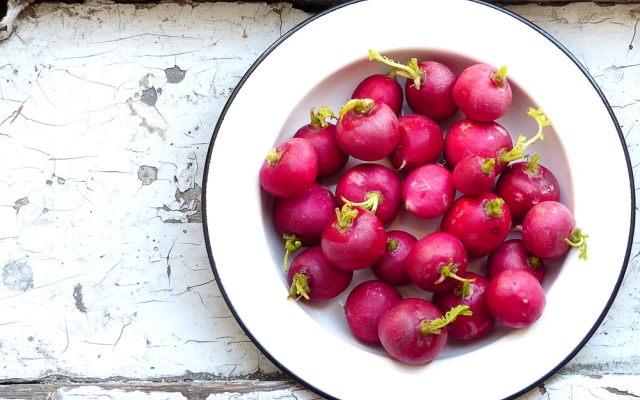
2. Radishes
Although most well-known for the small, round, red-skinned variety, radishes actually come in a wide range of shapes, sizes, colours, and even flavours. They can be small and round like a nut, or they can be fairly large and tube-shaped, like a carrot. They also come in a rainbow of colours, from deep reds to pinks and purples to stark white and black. And, as a cruciferous vegetable like broccoli (a well-known nutritional powerhouse), radishes have a host of health benefits, from helping to eliminate toxins from your body to fighting cancer and keeping you cool and hydrated all summer long. This is one of the most under-appreciated spring veggies, and you should be excited about it!
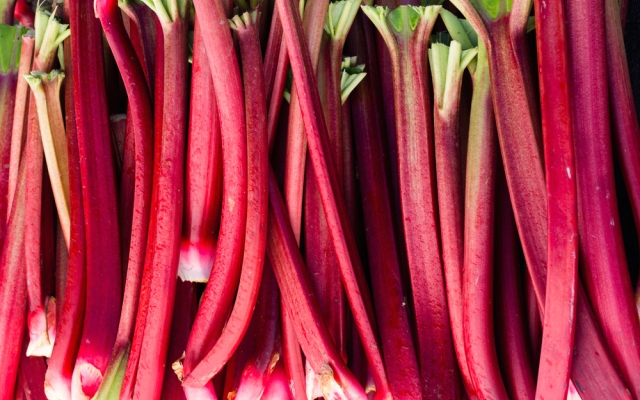
3. Rhubarb
Rhubarb is a gorgeous plant with its ruby red to pale pink stalks and bright green leaves. It is actually a vegetable but its lovely flavour is better suited to desserts so many think of it as a fruit. Rhubarb is a source of potassium, vitamin C, and calcium, and is also an anti-oxidant. Rhubarb is a great plant for your garden as it is quite robust. It will come back every spring and enable you to create yummy pies, crumbles, jams, and chutneys. But beware! The leaves of rhubarb are actually poisonous and should be discarded so only the stalks can be consumed. The stalks of rhubarb should be cooked before eating them. And if you often find yourself overrun with it, we have lots of great ideas for rhubarb.
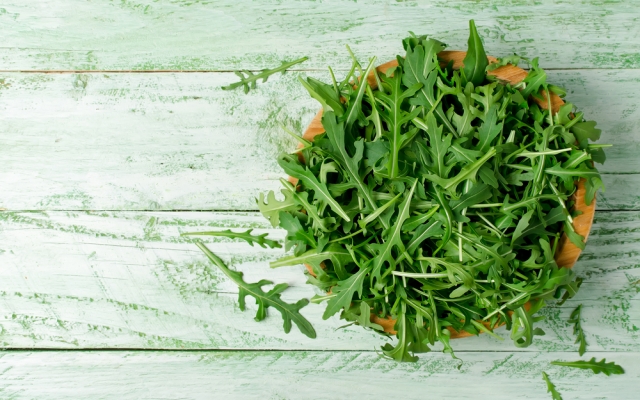
4. Arugula
This list of spring veggies is a little misleading since Arugula is actually an herb. It has a wonderfully peppery flavour with a hint of mustard. It is also known as rocket. The smaller the leaves, the smoother and less bitter the flavour. Arugula has to be thoroughly soaked and cleaned as it can have a lot of grit like spinach. It’s packed with healthy nutrients including phytochemicals, anti-oxidants, vitamins, and minerals. It is also a powerful antioxidant that contains Vitamins A, K, and C. It is great for young women who are trying to get pregnant as it is an excellent source for folic acid.
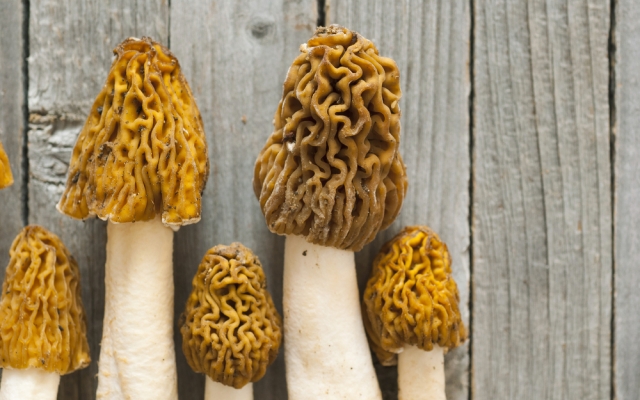
5. Morels
You are forgiven for not having a clue what this is. Morels are a wild mushroom recognizable by their spongy, brain like appearance. They are sought out by mushroom enthusiasts every spring. They grow around many species of trees including apple trees so they can often be found in apple orchards. However, because there are both poisonous and edible versions, buy them at the grocers to be safe. Morels are low in fat and high in iron, Vitamin D, and phosphorous. Morels must be cooked before eaten as they can make you ill if you eat them raw.
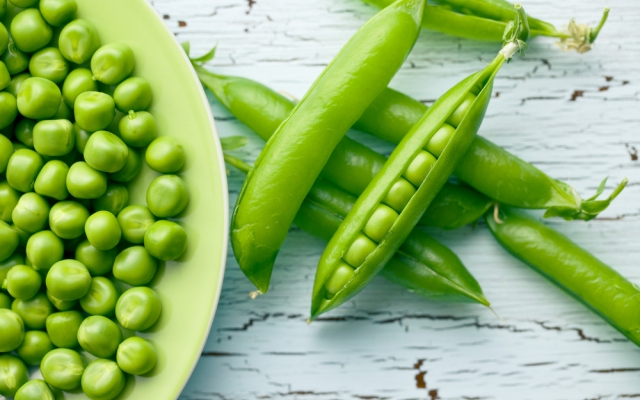
6. Peas
Peas are an excellent source of folacin and contain Vitamins A and C, fibre, and potassium. They are a wonderful snack eaten raw when in season. Pair them with mint when in season and enjoy shelled or in the shell fresh off the vine.
Peas should be bright, deep green and the pods should be glossy. You rarely find them shelled as the pods protect them and are often delicious to eat. Store peas in the fridge in a plastic bag for several days but they are best eaten as fresh as possible. Add peas to rice and stews, in salads and soups, and in or out of their pods. Peas are easily grown at home and can be eaten right off the vine. If you have only ever had canned peas, you must try them fresh. Frozen peas are quite nice and can be enjoyed all year long.
Tagged under: fresh vegetables,veggie ideas,spring veggies
Category: recipegeek,food


